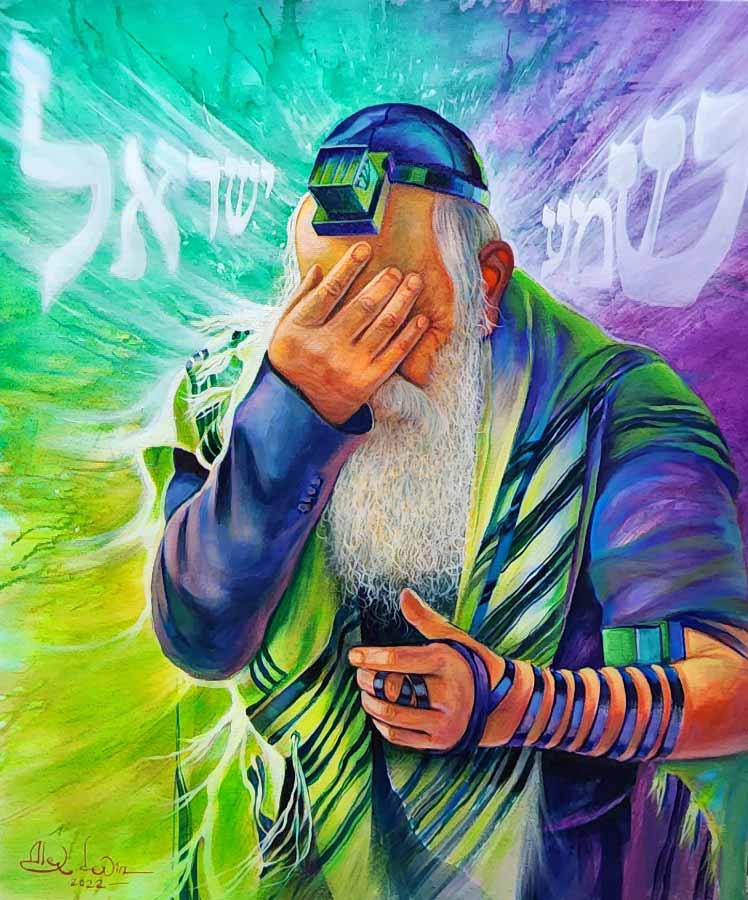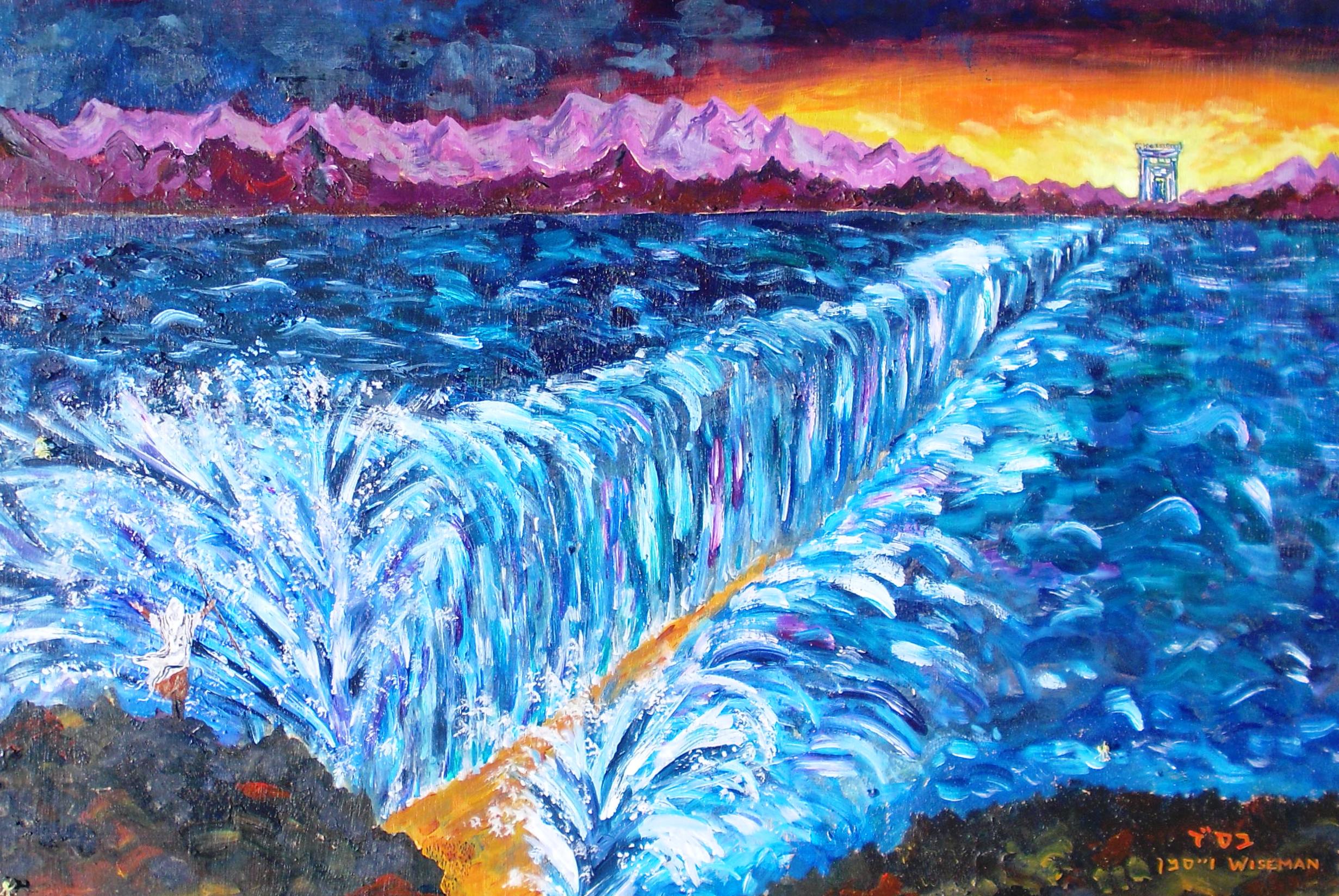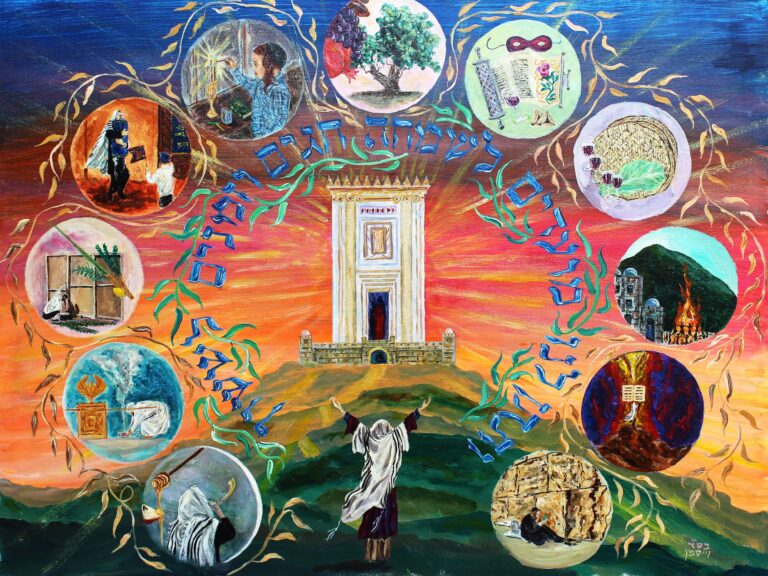The Beautiful Maiden or the Evil Maidservant

The Secret of the Erev Rav (Part 3)
In the past two issues of The Shoemaker Report, we examined the origins and characteristics of the souls of the converts who accompanied the Jewish People when they left Egypt in the days of Moshe Rabbeinu. This group, known collectively as the Erev Rav ('mixed multitude'), is divided into five distinct groups, originally described in the Zohar ha-Kadosh and then later by the Vilna Gaon in his commentary to the Torah called Aderet Eliyahu. Perhaps the most important thing we learned about the Erev Rav is that they have evolved over time, not only in their descriptive characterization but also in their association with the Jewish People. In particular, no longer can they be viewed as a separate group of people mixed in with the Jews, but rather as a collective soul mixed together with the collective soul of the Jewish People. This means that if we want to extricate ourselves from their influence, which we must do if we want Mashiach to be revealed in our day, then we must extricate ourselves from their bad middot which can be found, in various degrees, within each and every one of us.
The Vilna Gaon said that the worst aspect of the Erev Rav, known as 'Amalekim', are those who champion lashon ha-ra as well as those who spread lies about and take up disputes and controversies with Torah sages. He calls this latter group 'champions of controversy', ba'alei machloket. Something which we did not directly mention in last week's article, but is important to bring up now, is that intimately connected with this aspect is the lust for z'nut, prostitution or whoredom. These two bad middot often go hand in hand as mentioned in Sefer ha-Middot in a number of different places. One source is in Ni'uf, II:2: עַל־יְדֵי הַמַּחֲלקֶת נוֹפֵל לְתַאֲוַת נִאוּף (Through machloket one falls into the lust of lewdness [ni'uf]). A second source is in Merivah I:20: הַנּוֹאֲפִים לָרב הֵם בַּעֲלֵי מְרִיבָה לַצַּדִּיקִים (Adulterers are, for the most part, people who champion disputes with the tzaddikim).
The Gemara gives us many things to be on the lookout for as we approach the revelation of Mashiach (Sanhedrin 97a): תניא ר' יהודה אומר דור שבן דוד בא בו בית הוועד יהיה לזנות והגליל יחרב והגבלן יאשם ואנשי גבול יסובבו מעיר לעיר ולא יחוננו וחכמת הסופרים תסרח ויראי חטא ימאסו ופני הדור כפני כלב והאמת נעדרת (It was taught in a Baraita, R' Yehudah says: The generation in which [Mashiach] ben David comes, the House of Meeting will be [used] for z'nut, the Galil will be destroyed, the Gavlan will be desolate, people [who live along the] border will wander from city to city and will receive no sympathy, and the wisdom of the rabbis will stink, and those who fear sin will be despised, the face of the generation will be like the face of a dog, and truth will be absent). That's quite the list, and it's not very pleasant to read especially if you believe that we are living in that generation! Nevertheless, read it we must, and learn from it we must, because it is our mesorah and part of our Torah.
We cannot go through the entire Baraita in detail; nevertheless, we can focus on one aspect of this laundry list, i.e. that the House of Meeting will become a place for z'nut, for prostitution. What is this House of Meeting? Rashi states unequivocally that it refers to a מקום שתלמידי חכמים מתוועדין שם ללמוד תורה (a place where talmidei chachamim [Torah sages] meet to learn Torah). Everyone must chose for himself whether he can accept this statement from Rashi or whether he cannot accept it. For the most part, if we have a vested interest, we'll lean toward finding a way to minimize the significance of this statement or to find an alternative explanation for it. If we don't have such a vested interest, we'll tend to be more willing to approach the issue with an open mind. Either way, our Torah states explicitly that what we refer to today as a beit midrash or a beit knesset will becomes, by and large, a house for prostitution.
For many years, we wondered about how all of this could unfold. How could it be that our study halls that have been revered for their kedushah for thousands of years could in such a short period of time become houses of prostitution? It is not that the buildings themselves will be turned into literal brothels as opposed to places of limud Torah, but rather that they will become filled with prostitution even though limud Torah continues to take place there! How so? Through improper use of our internet-connected devices. Nothing more should need to be said, but in case it is not understood, the moment a yeshiva student, an avreich, a ba'al ha-bayit, or even a rabbi, looks at obscenities on a smartphone or computer (or entertains lustful thoughts and fantasies), he may have engaged in an act of prostitution with a goya, niddah, shifchah and zonah—violating four separate prohibitions! These are not our words; these are the words of Chazal. All we are doing here is to elucidate them based on the sad realities of our time, something which the Rishonim and the Acharonim could not even have begun to imagine would be possible.
As is known, each of the nations of the goyim throughout history have their source in one of seventy spiritual roots, each with its unique set of strengths and weaknesses. One of the reasons for the galut of the Jewish People into all of these nations is to be confronted with their unique bad middah in order to break it and purify it from the klipah. Even though each of the nations has its own unique bad middah (murder, theft, injustice, etc.), one particularly bad middah, worse than all the others, is common to each of the 70 nations. And what is that? Likutei Moharan 36:2 spells it out: וְדַע, שֶׁכְּלָלוּת שֶׁל שִׁבְעִים לָשׁוֹן שֶׁל מִדּוֹתֵיהֶן הָרָעוֹת הַלָּלוּ הִיא תַּאֲוַת נִאוּף וְהוּא תִּקּוּן הַכְּלָלִי מִי שֶׁמְּשַׁבֵּר הַתַּאֲוָה הַזֹּאת אֲזַי בְּקַל יָכוֹל לְשַׁבֵּר כָּל הַתַּאֲווֹת (You should know that encompassing the 70 nations [literally, 'languages'] and their bad middot is the lust for ni'uf, and this is the [purpose of reciting] Tikkun ha-Klali [chapters 16, 32, 41, 42, 59, 77, 90, 105, 137, 150 of Sefer Tehillim], and someone who breaks this lust will be able to break all lusts with relative ease).
So how do we break the lust for ni'uf? We do this by reciting the unique set of 10 mizmorim known as Tikkun ha-Klali. However, if we want not only to repair previous damage caused by the sin of p'gam ha'brit, but also to purify ourselves so that we no longer damage ourselves in the first place, we need to go one step further. We need to guard our eyes. This is exactly the strategy employed by Yosef the Tzaddik. How did he become such a tzaddik? He refused to look at Potiphar's wife. Day in and day out, he refused to take even a glance. This enraged her more and more, causing her to dress even more immodestly as the days went by, making it even more difficult for Yosef. Yet, he didn't break. Even when he was in prison, the test continued. And even after he was made viceroy over Egypt, the test still continued as the young Egyptian girls would climb the walls to catch a glimpse of him as he passed by in his royal grandeur. He staunchly refused to raise his eyes to look at them even once (Bereshit 49:22). By way of comparison, this is just the opposite of what we see with Bila'am the Rasha. How did he become such a rasha? He boasted that he was the one with the שְׁתֻם הָעָיִן ['open eye'] (Bamidbar 24:3). And with that eye he looked at the forbidden and became so steeped in lewdness that he engaged in bestiality with his donkey (Bamidbar 22:30).
Therefore, not only do we need to disconnect ourselves from the Sitra Achra, we need to connect ourselves to the Sitra d'Kedushah. Another way to say this is that we need to peel away the klipah to access the fruit. How do we do this? We do this by covering our eyes during Kriat Shema and concentrating on the meaning of the first two pesukim when we do so (L.M. 36:3): לְפִיכָךְ כְּשֶׁקּוֹרִין פָּסוּק רִאשׁוֹן שֶׁל קְרִיאַת־שְׁמַע צָרִיךְ לְהַעֲצִים אֶת עֵינָיו בִּבְחִינַת עוּלִימְתָּא שַׁפִּירְתָּא דְּלֵית לָהּ עֵינִין כִּי תִּקּוּן שֶׁל הִרְהוּרֵי זְנוּת שֶׁבָּא לָאָדָם שֶׁיֹּאמַר שְׁמַע וּבָרוּךְ שֵׁם כִּי תַּאֲוַת נִאוּף הִיא בָּאָה מֵעֲכִירַת דָּמִים הַיְנוּ מִטְּחוֹל שֶׁהִיא לִילִית שֶׁהִיא שִׁפְחָה בִּישָׁא אִמָּא דְּעֵרֶב רַב שֶׁהִיא מַלְכוּת הָרְשָׁעָה (Therefore, when we read the first pasuk of the Shema, it is necessary for one to close one's eyes in the aspect of 'the beautiful maiden who does not have eyes' [Zohar ha-Kadosh Mishpatim 95a], for the tikkun for the immoral thoughts of z'nut that come to a man is to recite the Shema and Baruch Shem for the lust for ni'uf comes from the murky blood, which is the spleen, which is Lilit, which is the Evil Maidservant, the mother of the Erev Rav, which is the Evil Malchut).
There is a lot in this statement and we cannot unpack it all in this short article. However, we'll mention a few ideas to help the reader understand the gist of it. Who is the beautiful maiden who has no eyes? She is the Shechinah, specifically the aspect of the Shechinah known as Rachel (whose eyes are never mentioned in the Torah). She represents the sefirah of Malchut, which can also represent Knesset Yisrael, the goy kadosh. What does it mean that she has no eyes? Is she a mutant without eyes in her head? No, rather she guards her eyes and behaves as if she had no eyes. Her blindness is like the blindness of the first beggar in the story The Seven Beggars from Sippurei Ma'asiyot. He was blind even though he had perfect vision. So too, she has perfect vision because she blinds herself, so to speak, from seeing the forbidden.
This is why we cover our eyes during the first two pesukim of the Shema. We are focusing on blinding ourselves from seeing the forbidden and only concentrating on accepting the yoke of the Kingdom of Heaven. This itself acts as a rectification for any immoral and lustful thoughts we may have had that come to us from time to time b'shogeg. However, as is explained in Likutei Moharan, if we routinely engage in immoral fantasies b'meizid, then just having kavanah during Kriat Shema will be insufficient for the tikkun. We will need to shed tears and break our hearts in shame for what we have seen and done. We learn this from the behavior of the whole community of B'nei Yisrael after they witnessed Zimri engage in illicit relations with Kozbi (Bamidbar 25:6). Their tears were not tears of despair in not knowing what to do, rather it is as stated in the Targum Yonatan: וְאִינוּן בַּכְיַין וְקַרְיַין שְׁמַע (They were crying and reciting the Shema). Their crying in combination with Kriat Shema was to protect themselves from having improper thoughts (L.M. 36:4). So consider. If the holy Jewish souls who witnessed the awesome revelations of Hashem that accompanied Matan Torah at Har Sinai needed to protect themselves with tears, what about us? And if you find it next to impossible to cry, then you're in need of stronger medicine. Break your sleep, get up in the middle of the night, walk outside, find a quiet park or field, and talk to Hashem. Perhaps after a couple of weeks, you'll be zocheh to shed a tear or two.
Where does the lust for ni'uf come from in the first place? It comes from the Sitra Achra itself, specifically from the malchut of the klipah, which is alternatively known as the evil maidservant, the adulterous woman, or Lilit, the mistress or consort of the Satan, the Samech-Mem. By entertaining lustful thoughts, one causes yichud between the Samech-Mem and his zivug, Lilit, thus giving rise to souls, the Erev Rav, whose origins are steeped in impurity. (All of this exactly parallels what happens on the side of kedushah when we have thoughts of purity. When we act with self-sacrifice in purity and holiness, we cause yichud between Ha-Kadosh baruch Hu and his beautiful maiden, the Shechinah, thus giving rise to holy Jewish souls.)
We should now have a reasonable understanding of the Erev Rav and what happened to Adam ha-Rishon when he refrained from having relations with his wife for 130 years. We are still dealing with the fallout of that fateful decision. Although he may have had the best of intentions and only spilled seed b'shogeg, what can be said of those of us today who do so b'meizid?
Before we conclude, we need to address a question that we asked in the first article in this series and haven't yet addressed. Why did Moshe Rabbeinu insist on converting the Erev Rav and taking them out of Egypt along with B'nei Yisrael? If there is one thing we need to know about the unique soul of Moshe Rabbeinu is that he is humble beyond human comprehension. He really wanted to effect their tikkun. He really felt that it was possible. Hashem, on the other hand, wanted them to die. Why? Because He knew that they weren't ready yet. From Hashem's point of view, it would have been better for them to have died in Egypt and then He could have brought them back in another gilgul at some later point in time. Moshe, apparently, didn't agree and didn't want to wait. As a side point, this illustrates just how much Hashem values bechirah chofshi. And as another side point, we find it interesting that this weakness in Moshe of not being patient enough, is the very sin committed by the Erev Rav against Moshe Rabbeinu when he didn't come down the mountain when they thought he should have. Everything in this world is a function of middah k'neged middah one way or another.
In conclusion, according to the Vilna Gaon, the two worst middot of the Erev Rav, which are often found together in the same person, are: (1) participating in and promoting discord and controversy with talmidei chachamim, and (2) entertaining the lust for ni'uf. So we need to examine ourselves. These sins are so severe that they not only prevent the revelation of Mashiach ben David, but if they are not rectified they can severe the connection of the soul from the Shechinah for all eternity. Therefore, we strongly recommend that we need to examine ourselves, and as the expression goes, 'If the shoe fits, wear it.' Cease saying or spreading anything negative about our great tzaddikim, and if you can't break your addiction, then smash your smartphone. Seriously. We're not joking. Find a good-sized rock and smash it. Maybe that rock was waiting just for you to fulfill its whole purpose of existence.







How do we know who is a true Talmud Chacham today? After the Covid debacle, talmidei Chachamim who I trusted in my community I have lost respect for due to their compliance to public health mandates and disparagement of those who refuse to comply. They promoted discord and machllokes.
You are absolutely right about what happened during the COVID debacle, i.e. how many apparently trustworthy rabbis showed their true colors. Very sad, but that's the honest truth. So, how can you tell who's who? If they're in good graces with the medinah, that's a red flag. If they're receiving kavod or money from their position, that's another red flag. On the other hand, if someone is hated by the medinah, and pursued as if he was public enemy #1, or if he is disgraced and remains silent, and if he doesn't receive money or kavod from speaking the truth, then more than likely you're looking at a true tzaddik.
This whole process hopefully has begun to teach people, like yourself and many, many others, to be discriminatory. Trust is to be earned. It is no longer assumed. This is part of the birur that is needed before the revelation of Mashiach.